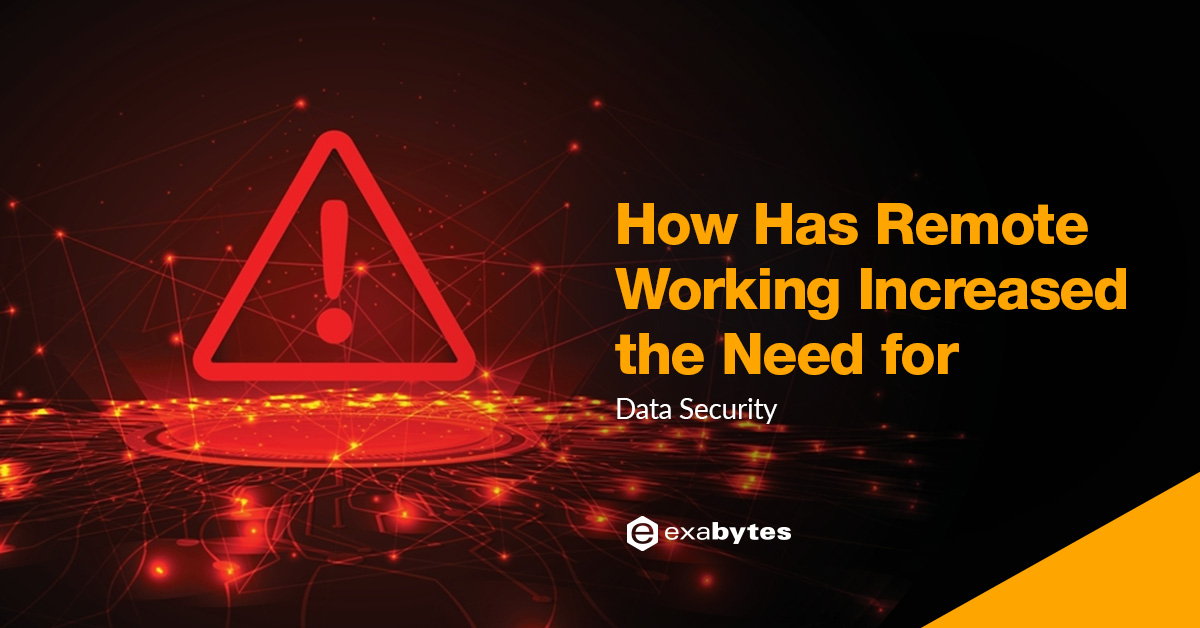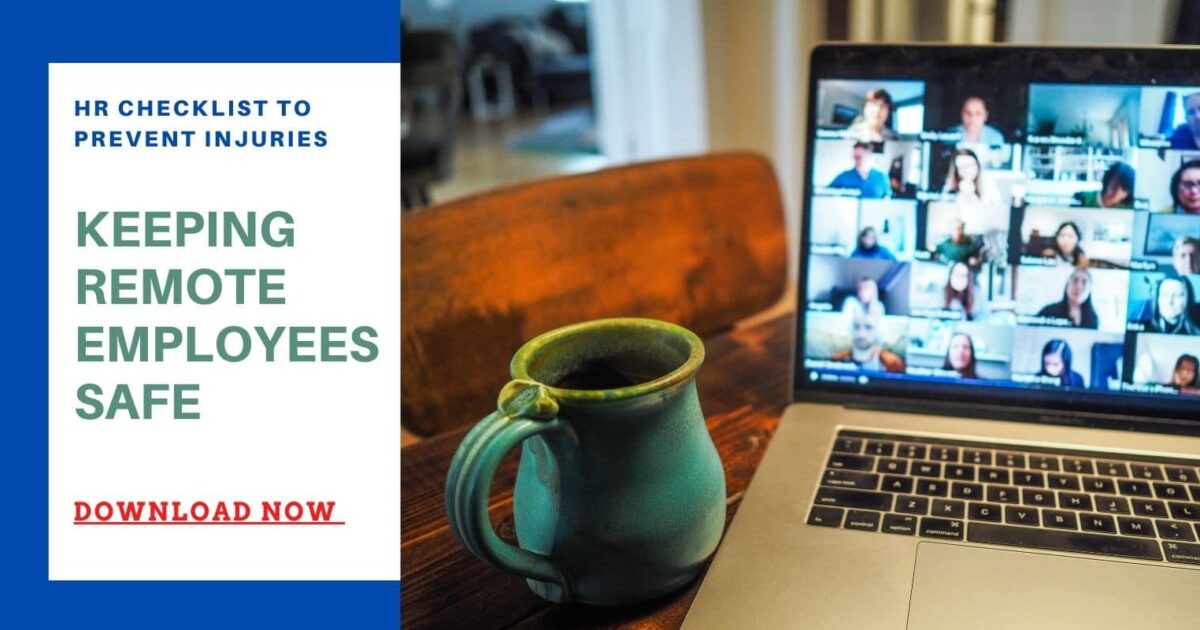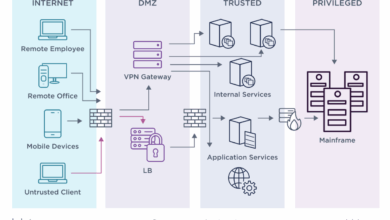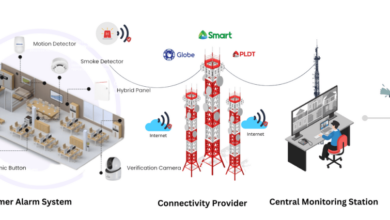
Ensuring Data Security with Remote Workers
Ensuring data security with remote workers is more critical than ever. The rise of remote work has dramatically expanded the attack surface for businesses, scattering sensitive information across diverse locations and devices. From securing home offices to navigating the complexities of public Wi-Fi, the challenges are multifaceted and demand a proactive, multi-layered approach to security. This post delves into the strategies and best practices necessary to protect your company’s data in this new landscape.
We’ll explore everything from implementing robust access controls and multi-factor authentication to educating employees about phishing and social engineering. We’ll also cover essential topics like data encryption, incident response planning, and navigating the legal and compliance aspects of remote work. Get ready to equip your remote workforce with the security they – and your data – need to thrive.
Defining the Scope of Remote Worker Data Security

Securing data in a remote work environment presents a significantly different challenge than managing security for on-site employees. The distributed nature of the workforce, the variety of devices and locations used, and the potential for less controlled network access all contribute to a heightened risk profile. Understanding the scope of this challenge is crucial for developing effective security strategies.Remote workers handle a wide range of sensitive data, the protection of which is paramount.
Failing to adequately secure this data can lead to significant financial losses, reputational damage, and legal repercussions. A comprehensive approach is needed to mitigate these risks.
Data Security Challenges Posed by Remote Workers
The inherent flexibility of remote work introduces several unique data security challenges. Unlike on-site employees who typically operate within a controlled network environment, remote workers often access company systems and data from various locations and using a diverse range of devices, some of which may not be company-owned or managed. This introduces vulnerabilities related to unsecured Wi-Fi networks, personal device security, and the potential for malware infections.
Additionally, monitoring employee activity and enforcing security policies becomes more complex in a distributed environment. The lack of direct physical oversight increases the difficulty in detecting and responding to security incidents.
Types of Data Handled by Remote Workers and Their Sensitivity
Remote workers may access and handle various types of data, each with different sensitivity levels. This could include confidential customer information (e.g., Personally Identifiable Information or PII, financial details), sensitive business data (e.g., intellectual property, strategic plans, financial reports), and internal communications. The sensitivity of the data dictates the level of security measures required. For instance, PII requires stringent protection under regulations like GDPR and CCPA, necessitating robust encryption and access control mechanisms.
Intellectual property, on the other hand, demands protection against unauthorized disclosure and theft.
Key Stakeholders in Ensuring Remote Worker Data Security
Several key stakeholders play crucial roles in establishing and maintaining a robust remote worker data security program. The IT department is responsible for implementing and managing security infrastructure, policies, and technologies. Human Resources (HR) plays a critical role in employee training and awareness programs, ensuring compliance with security policies. Management provides the necessary resources and support to implement and enforce security measures.
Effective collaboration between these stakeholders is essential for success. Legal counsel also plays a critical role in ensuring compliance with relevant data protection regulations.
Comparison of Data Security Risks Across Remote Work Setups, Ensuring data security with remote workers
The security risks associated with remote work vary depending on the specific setup. The following table compares these risks across different scenarios:
| Device Type | Location | Risk Level | Mitigation Strategy |
|---|---|---|---|
| Personal Laptop | Home Office | Medium | Implement strong password policies, use endpoint detection and response (EDR) software, and enforce regular software updates. |
| Company-Provided Desktop | Co-working Space | High | Utilize a VPN for secure network access, ensure strong Wi-Fi security at the co-working space, and implement multi-factor authentication (MFA). |
| Smartphone | Public Wi-Fi | Very High | Avoid accessing sensitive data on public Wi-Fi, use a VPN, and enable device encryption. |
| Tablet | Hotel Room | Medium-High | Use strong passwords, enable device encryption, and avoid connecting to unsecured Wi-Fi networks. Consider using a company-provided VPN. |
Implementing Robust Access Control and Authentication

Securing remote worker access requires a multi-layered approach, with robust access control and authentication forming the bedrock of a strong security posture. This involves not only choosing the right tools but also establishing clear policies and procedures for their effective use. Without a solid foundation in these areas, even the most advanced security measures can be rendered ineffective.Multi-factor authentication (MFA) significantly enhances security by requiring multiple forms of verification before granting access.
This makes it exponentially harder for unauthorized individuals to gain entry, even if they possess a stolen password. Combining different authentication factors adds layers of protection, mitigating the risk associated with compromised credentials.
Multi-Factor Authentication (MFA) Methods
Implementing MFA is crucial for remote workers. Several methods offer varying levels of security and convenience. Time-based One-Time Passwords (TOTP), generated by authenticator apps like Google Authenticator or Authy, offer a good balance between security and usability. These apps create unique codes that change every few seconds, making it extremely difficult for attackers to intercept and use the codes.
Keeping our remote team’s data safe is a top priority, especially with the rise of sophisticated cyber threats. We’re exploring new ways to boost security, and I’ve been researching solutions like those discussed in this insightful article on domino app dev the low code and pro code future , which highlights how streamlined development can lead to more secure and easily managed applications.
Ultimately, leveraging these modern tools will help us better protect sensitive information for our dispersed workforce.
Hardware security keys, such as Yubikeys, provide even stronger security by using physical devices to authenticate users. These keys are tamper-resistant and require physical possession for access, adding an extra layer of protection against phishing attacks and credential stuffing. Finally, biometric authentication, using fingerprints or facial recognition, offers a convenient and secure option, but its effectiveness depends on the quality of the biometric sensor and the security measures implemented to protect the biometric data itself.
The choice of MFA method should depend on the sensitivity of the data accessed and the risk tolerance of the organization.
Strong Password Policies and Password Management
Strong passwords are a fundamental element of access control. A robust password policy should mandate passwords that are at least 12 characters long, incorporating uppercase and lowercase letters, numbers, and symbols. Furthermore, passwords should be unique and not reused across different accounts. Password managers can greatly assist in managing complex passwords securely. These tools generate strong, unique passwords for each account and store them securely, encrypted with a master password.
Regular password rotation, enforced by the system or through company policy, further enhances security. For instance, a policy mandating password changes every 90 days reduces the window of vulnerability if a password is compromised.
Virtual Private Networks (VPNs) and Secure Remote Access
VPNs create a secure, encrypted connection between a remote worker’s device and the company network. This encryption protects data transmitted over the internet, preventing eavesdropping and data breaches. When a remote worker connects to the company network via a VPN, their traffic is routed through an encrypted tunnel, masking their IP address and protecting their data from unauthorized access.
VPNs are essential for securing access to sensitive company resources and ensuring compliance with data privacy regulations. Selecting a VPN provider with a strong security track record and robust encryption protocols is crucial.
Onboarding a New Remote Worker: A Step-by-Step Procedure
A secure onboarding process is essential to minimize security risks associated with new remote workers. The following steps should be implemented:
- Initial Security Awareness Training: Before granting any access, new remote workers should undergo mandatory security awareness training. This training should cover password security, phishing awareness, safe browsing practices, and the importance of reporting suspicious activity.
- Device Security Assessment: The company should assess the security of the remote worker’s device before granting access to the company network. This might involve installing security software, ensuring the operating system is up-to-date, and configuring appropriate security settings.
- VPN Setup and Configuration: The remote worker should be guided through the process of setting up and configuring a VPN connection to the company network. This should include instructions on how to connect and disconnect securely, and what to do if they encounter any problems.
- Multi-Factor Authentication (MFA) Enrollment: The new employee should be enrolled in the company’s MFA system. This should be done using a secure method, such as a one-time code sent to their registered email address or mobile phone.
- Access Rights Assignment: The remote worker should only be granted access to the systems and data they require to perform their job duties. The principle of least privilege should be strictly adhered to.
- Initial Security Checklist: A checklist should be provided to the remote worker, outlining their security responsibilities and outlining the company’s security policies.
Data Encryption and Protection Measures
Securing data in a remote work environment requires a multi-layered approach, and encryption is a cornerstone of this strategy. It’s crucial to understand the different types of encryption and how they protect data both while it’s being transmitted and when it’s stored. Implementing robust data loss prevention (DLP) measures is equally important to mitigate the risks associated with remote access.Data encryption transforms readable data (plaintext) into an unreadable format (ciphertext), rendering it incomprehensible to unauthorized individuals.
The effectiveness of encryption depends heavily on the chosen method and the strength of the encryption key. Different methods offer varying levels of security and complexity.
Comparison of Data Encryption Methods
End-to-end encryption (E2EE) and disk encryption are two common methods, each with its strengths and weaknesses. E2EE secures data from the sender’s device to the recipient’s device, ensuring only these two parties can access the information. This is particularly valuable for sensitive communications, such as financial transactions or confidential client data. However, E2EE can be more complex to implement and manage.
Disk encryption, on the other hand, protects data stored on a hard drive or other storage device. This safeguards data even if the device is lost or stolen. While simpler to implement than E2EE, disk encryption doesn’t protect data in transit. For comprehensive security, both methods may be necessary. For example, a company might use E2EE for all communication through a messaging application, while simultaneously using disk encryption on all company laptops.
Best Practices for Securing Data in Transit and at Rest
Protecting data in transit involves securing data while it’s being transmitted over a network. This is achieved using secure protocols such as HTTPS for web traffic and VPNs for remote access. HTTPS encrypts communication between a web browser and a server, preventing eavesdropping. VPNs create a secure, encrypted tunnel between a remote device and a company network, protecting data from interception.
Securing data at rest, on the other hand, involves protecting data stored on devices or servers. This is accomplished through disk encryption, strong access controls, and regular backups. Regular software updates are also vital to patch vulnerabilities that could compromise data security. For instance, a company might mandate the use of a VPN for all remote access and enforce disk encryption on all company-owned devices.
Data Loss Prevention (DLP) Methods for Remote Workers
Data loss prevention (DLP) aims to prevent sensitive data from leaving the organization’s control. In a remote work environment, DLP strategies include implementing access controls that restrict access to sensitive data based on roles and responsibilities, using data encryption to protect data both in transit and at rest, regularly backing up data to secure offsite locations, and monitoring employee activity for suspicious behavior.
Sophisticated DLP software can monitor data movement and block attempts to transfer sensitive information to unauthorized destinations. This software can also identify and prevent sensitive data from being included in emails or uploaded to cloud storage services without authorization. A robust DLP strategy should incorporate a combination of technical and administrative controls to minimize the risk of data loss.
Recommended Security Software and Tools for Remote Workers
Choosing the right security software is crucial for remote workers. Here’s a list of commonly used tools:
- VPN (Virtual Private Network): Creates a secure connection to the company network, encrypting data in transit. Limitations: Can slow down internet speed, requires configuration.
- Endpoint Detection and Response (EDR): Monitors endpoint devices for malicious activity and provides threat detection and response capabilities. Limitations: Can impact system performance, requires regular updates.
- Disk Encryption Software (e.g., BitLocker, FileVault): Encrypts data stored on hard drives, protecting it even if the device is lost or stolen. Limitations: Requires a strong password or key management system.
- Multi-Factor Authentication (MFA): Adds an extra layer of security to logins, requiring more than just a password. Limitations: Can be inconvenient if not properly implemented.
- Password Manager: Helps users create and manage strong, unique passwords for different accounts. Limitations: Requires trust in the password manager provider.
- Data Loss Prevention (DLP) Software: Monitors data movement and prevents sensitive information from leaving the organization’s control. Limitations: Can be complex to configure and manage.
Security Awareness Training and Education
Keeping remote workers informed and engaged in security best practices is paramount. A comprehensive security awareness program isn’t just about ticking boxes; it’s about fostering a security-conscious culture where every employee understands their role in protecting company data. This involves ongoing training, clear communication, and readily available reporting mechanisms.Effective security awareness training equips remote workers with the knowledge and skills to identify and mitigate potential threats.
It reduces the risk of successful attacks stemming from human error, a major vulnerability in any organization, especially those with distributed workforces. Regular refreshers ensure that employees stay up-to-date on evolving threats and best practices.
Sample Security Awareness Training Module for Remote Workers
This module focuses on practical skills and real-world scenarios. It’s designed to be interactive and engaging, using a blend of short videos, quizzes, and interactive exercises.
Module 1: Phishing and Social Engineering
This section explains what phishing and social engineering are, providing real-world examples of phishing emails and social engineering tactics. It emphasizes identifying suspicious emails, links, and attachments, and covers best practices for responding to suspicious communications. The module includes interactive exercises where employees practice identifying phishing attempts. A quiz at the end assesses understanding. For example, employees would learn to recognize the hallmarks of a phishing email – unusual greetings, urgent requests for personal information, suspicious links or attachments, and grammatical errors.
Keeping our remote team’s data safe is a constant juggling act, especially with the ever-expanding cloud landscape. A big part of that is having a strong Cloud Security Posture Management (CSPM) strategy, and I’ve been researching tools like Bitglass; check out this great article on bitglass and the rise of cloud security posture management for more info.
Ultimately, understanding CSPM is key to ensuring our remote workers can access the data they need securely and efficiently.
Module 2: Malware Awareness
This section covers various types of malware, including viruses, ransomware, and spyware. It explains how malware spreads and its potential impact. Employees learn to identify potential malware sources, such as malicious websites, infected attachments, and untrusted software. It also covers best practices for protecting devices from malware, including using antivirus software, keeping software updated, and practicing safe browsing habits.
The section includes a scenario-based exercise where employees have to identify potentially malicious files or links.
Module 3: Password Security and Best Practices
This section emphasizes the importance of strong, unique passwords for all accounts. It covers password management techniques, including password managers and the avoidance of password reuse. Employees learn about multi-factor authentication (MFA) and its benefits. The section includes a practical exercise where employees create strong passwords and evaluate the strength of different password options.
Security Awareness Training Plan
Regular training is key to maintaining a high level of security awareness. Our plan involves quarterly training modules focusing on different aspects of security, supplemented by monthly email newsletters highlighting current threats and best practices. Annual refresher courses reinforce key concepts and address new security challenges. The plan also includes regular security awareness campaigns featuring engaging content, such as infographics, short videos, and quizzes, delivered through various communication channels including email, internal messaging platforms, and company intranet.
Communicating Security Policies and Procedures
Clear, concise communication is essential. We utilize a multi-pronged approach. First, all security policies and procedures are made readily available on the company intranet, written in plain language, avoiding technical jargon. Second, we hold regular team meetings to discuss key security updates and address employee questions. Third, we use a combination of email announcements, video tutorials, and interactive online modules to reinforce critical security information.
This layered approach ensures that the information reaches everyone and is easily understood.
Employee Reporting Mechanisms for Security Incidents and Vulnerabilities
A secure and accessible reporting system is vital. We provide multiple channels for employees to report security incidents or vulnerabilities without fear of reprisal. This includes a dedicated email address, a secure online reporting form, and the option to report directly to their manager or the IT department. The reporting system is designed to be user-friendly and anonymous if the employee prefers.
All reports are investigated promptly and employees are kept informed of the investigation’s progress.
Monitoring and Incident Response for Remote Workers

Protecting your company’s data when employees work remotely requires a proactive approach that goes beyond simply implementing security measures. Continuous monitoring and a well-defined incident response plan are crucial for mitigating risks and minimizing damage in the event of a security breach. This involves tracking key metrics, establishing clear escalation paths, and conducting regular security audits.
Key Metrics for Identifying Potential Security Breaches
Effective monitoring relies on tracking specific metrics that can indicate potential security issues. These metrics should be regularly reviewed and analyzed to identify trends and anomalies. Ignoring these signals can lead to significant security breaches. For example, a sudden spike in failed login attempts from unusual geographic locations might signal a brute-force attack. Similarly, unusually high data transfer volumes during off-peak hours could suggest unauthorized data exfiltration.
Regular monitoring of these key indicators is essential for proactive threat detection.
Incident Response Procedures
A comprehensive incident response plan is essential for handling security incidents efficiently and effectively. This plan should detail clear escalation paths, communication protocols, and specific actions to be taken in various scenarios. For instance, a suspected data breach involving a remote worker’s device might involve immediately suspending the affected user’s access, isolating the compromised device, and launching a full forensic investigation.
The plan should also Artikel who is responsible for each step, including contact information for key personnel. Clear communication protocols are crucial, ensuring all relevant stakeholders are informed promptly and accurately. This includes establishing communication channels for internal teams and external parties such as law enforcement or legal counsel, as appropriate.
Regular Security Audits and Assessments
Regular security audits and assessments are crucial for identifying vulnerabilities before they can be exploited. These audits should cover all aspects of the remote worker security infrastructure, including endpoint devices, network access, and data storage. Penetration testing, vulnerability scanning, and security awareness training assessments can help identify weaknesses in the system. The findings from these audits should be used to inform improvements to the security posture, strengthening defenses against potential threats.
Regular assessments help ensure that the security measures remain effective and adapt to evolving threats.
Investigating and Responding to a Suspected Data Breach
Responding to a suspected data breach requires a systematic and methodical approach. A step-by-step guide is essential for ensuring a consistent and effective response.
- Isolate the compromised system: Immediately disconnect the affected device from the network to prevent further data exfiltration.
- Secure the evidence: Create forensic images of the affected device and any relevant data stores to preserve evidence for investigation.
- Identify the scope of the breach: Determine the extent of the compromise, including which data was accessed or exfiltrated.
- Notify relevant parties: Inform affected individuals, regulatory bodies (if required), and law enforcement as appropriate.
- Remediate the vulnerability: Address the root cause of the breach to prevent future incidents. This may involve patching software vulnerabilities, updating security policies, or retraining employees.
- Conduct a post-incident review: Analyze the incident to identify lessons learned and improve future response procedures.
Managing and Securing Remote Devices: Ensuring Data Security With Remote Workers
Securing the devices used by remote workers is paramount for maintaining data security. Whether the device is company-owned or personally owned, the potential for data breaches and security vulnerabilities exists if proper measures aren’t implemented. This section Artikels strategies for managing and securing both company-owned and personal devices used for work purposes.
Effective management of remote devices requires a multi-layered approach encompassing device control, security software, and user education. The key is to balance the need for productivity with the imperative of protecting sensitive company information.
Company-Owned Device Management
Company-owned devices, such as laptops and mobile phones, offer greater control over security. Implementing Mobile Device Management (MDM) solutions allows for centralized management and monitoring of these devices. This includes the ability to remotely wipe data, enforce password policies, install security updates, and monitor device usage. Using strong encryption both at rest and in transit is crucial for protecting sensitive data stored on these devices.
Regular security audits and vulnerability scans should also be conducted to identify and address any potential weaknesses. Furthermore, implementing a robust bring your own device (BYOD) policy that includes a clear distinction between company-owned and personal devices can be highly beneficial in managing risk.
Securing Personal Devices Used for Work
Allowing employees to use their personal devices for work (BYOD) presents unique challenges. While it offers flexibility, it increases the risk of data breaches if not properly managed. To mitigate this risk, organizations should implement a comprehensive BYOD policy that clearly Artikels acceptable use, security requirements, and consequences of non-compliance. This policy should mandate the use of strong passwords, multi-factor authentication, and mobile device management solutions where possible.
Regular security updates and the installation of reputable antivirus software are also essential. Data encryption, both for data at rest and in transit, is crucial for protecting sensitive information. Employees should also be trained on best practices for using personal devices for work, including avoiding public Wi-Fi and being mindful of phishing scams.
Security Risks Associated with Using Personal Devices for Work and Mitigation Strategies
Using personal devices for work introduces several security risks, including loss or theft of the device, malware infection, and unauthorized access. Loss or theft could expose sensitive company data. Malware infection can compromise the device and potentially access company data. Unauthorized access, perhaps through weak passwords or lack of multi-factor authentication, can allow malicious actors to steal data.
Mitigation strategies include implementing strong password policies, using multi-factor authentication, regularly updating software and antivirus programs, encrypting data, and educating employees on security best practices. Regular security awareness training is crucial to ensure employees understand the potential risks and how to mitigate them. Consider also the use of Virtual Private Networks (VPNs) to encrypt communication when using personal devices on public networks.
Remote Worker Device Security Checklist
Before accessing company data on any device, remote workers should verify the following:
This checklist ensures that devices meet minimum security standards before connecting to company systems and accessing sensitive data. Regular review and updates to this checklist are important as threats and vulnerabilities evolve.
- Strong password enabled with multi-factor authentication where available.
- Operating system and all applications are up-to-date with the latest security patches.
- Reputable antivirus software is installed and actively scanning for threats.
- Data encryption is enabled both for data at rest and in transit.
- Device is protected by a screen lock with a strong password or biometric authentication.
- Only authorized applications are installed on the device.
- Public Wi-Fi is avoided whenever possible; VPN is used when accessing company data on public networks.
- Regular backups of important data are performed.
- Familiar with and adhere to company’s security policies.
Legal and Compliance Considerations
Navigating the legal landscape of remote worker data security can feel like traversing a minefield. The sheer number of regulations and the potential consequences of non-compliance make it a critical area for any organization employing remote staff. Understanding and adhering to relevant laws is not just a matter of avoiding penalties; it’s about building trust with your employees and customers, and protecting your company’s reputation.Data privacy regulations are constantly evolving, and staying ahead of the curve requires proactive monitoring and adaptation.
Failing to do so can lead to significant financial losses, reputational damage, and even legal action. This section will explore key regulations and offer practical steps to ensure compliance.
Relevant Data Privacy Regulations and Compliance Standards
Several significant regulations govern the handling of personal data, particularly in the context of remote work. The General Data Protection Regulation (GDPR) in Europe and the California Consumer Privacy Act (CCPA) in the United States are two prominent examples. GDPR applies to any organization processing the personal data of individuals within the EU, regardless of the organization’s location.
CCPA, similarly, affects businesses that collect California residents’ personal information. Other regional and national laws, such as the Brazilian LGPD (Lei Geral de Proteção de Dados), also need to be considered depending on the location of your remote workers and the data you process. Understanding the specific requirements of each applicable regulation is crucial.
Ensuring Compliance with Data Privacy Regulations
Compliance involves a multi-faceted approach. It begins with conducting a thorough data mapping exercise to identify all personal data collected, processed, and stored. This includes data from employees, customers, and any other stakeholders. Next, implement appropriate technical and organizational measures to protect this data, aligning with the principles of data minimization and purpose limitation. This includes robust access controls, encryption, and regular security assessments.
Crucially, transparent data processing policies must be established and readily available to employees and data subjects. Finally, mechanisms for handling data subject requests (e.g., access, rectification, erasure) under GDPR and CCPA must be put in place. Regular audits and training programs help maintain ongoing compliance.
Legal Implications of Data Breaches Involving Remote Workers
Data breaches involving remote workers can have severe legal ramifications. Depending on the nature and scale of the breach, organizations can face hefty fines, lawsuits from affected individuals, and reputational damage. The legal implications are amplified when the breach involves sensitive personal data like health records or financial information. Investigations by regulatory bodies are likely, potentially leading to further penalties.
A swift and transparent response, including notification to affected individuals and regulatory authorities as required by law, is critical in mitigating the legal fallout. Comprehensive incident response plans are essential for handling data breaches effectively and minimizing legal exposure.
Sample Data Security Policy for Remote Workers
This policy Artikels the data security responsibilities of all remote workers employed by [Company Name]. All remote workers are expected to adhere to this policy to ensure the confidentiality, integrity, and availability of company data. Access to company systems and data is granted on a need-to-know basis and is subject to strict access controls. Remote workers are prohibited from accessing company data from unauthorized devices or locations. All company data must be encrypted both in transit and at rest. Remote workers are responsible for protecting their assigned devices and reporting any suspected security incidents immediately. Failure to comply with this policy may result in disciplinary action, up to and including termination of employment. This policy is subject to change and will be updated periodically to reflect changes in technology and legal requirements. Remote workers are responsible for staying informed of any updates. Specific details regarding data privacy regulations (GDPR, CCPA, etc.) applicable to the company’s operations and the handling of personal data are detailed in [link to relevant document].
Last Recap
Securing data in a remote work environment isn’t just about technology; it’s about building a culture of security. By implementing strong access controls, investing in robust security tools, and fostering a culture of awareness and responsibility, businesses can significantly reduce their risk. Remember, a proactive and layered approach is key. Regular security audits, employee training, and a well-defined incident response plan are essential components of a comprehensive security strategy.
Don’t let the convenience of remote work compromise your data; take control and build a secure future for your business.
FAQ Overview
What are the biggest risks associated with using personal devices for work?
Using personal devices increases the risk of malware infection, data breaches through unsecured networks, and difficulty in enforcing company security policies. Data may also be more vulnerable to loss or theft.
How often should security awareness training be conducted?
Ideally, security awareness training should be conducted annually, with regular refresher courses (quarterly or bi-annually) covering current threats and best practices.
What should I do if I suspect a data breach?
Immediately report the incident to your IT department or designated security contact. Follow your company’s incident response plan and refrain from accessing any potentially compromised systems or data.
How can I ensure compliance with GDPR and other data privacy regulations?
Understand the requirements of relevant regulations, implement appropriate technical and organizational measures (like data encryption and access controls), and maintain detailed records of your data processing activities. Consult with legal counsel to ensure full compliance.





